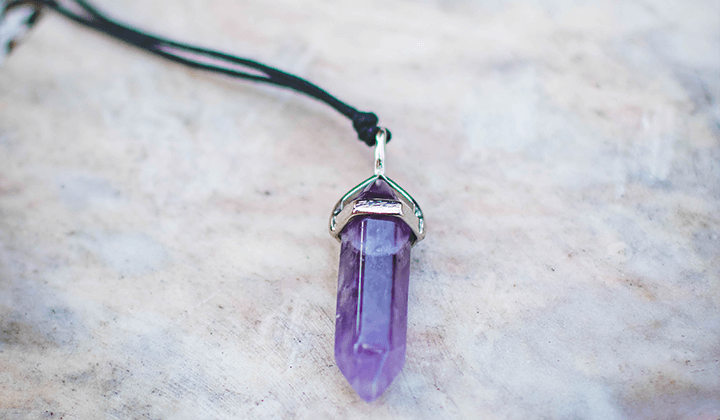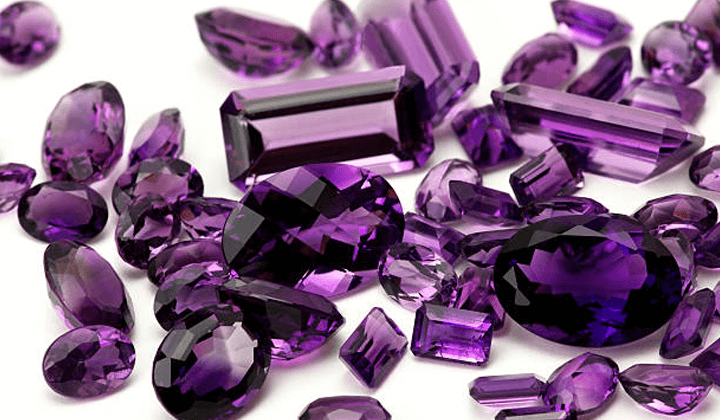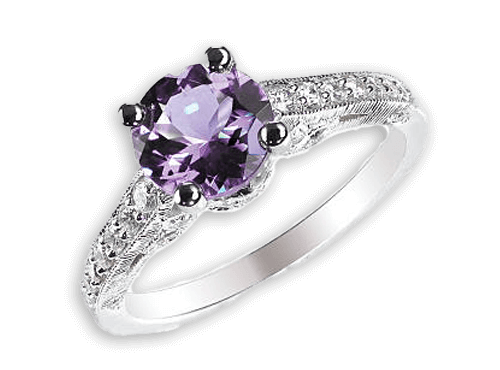Everything you need to know about Ametrine Gemstone
Purple quartz is known as Amethyst, while yellow quartz is called citrine. Yet Ametrine, often known as amethyst-citrine, is a variety of transparent quartz that displays both amethyst and citrine characteristics in a single gem.

Quartz is abundant across the earth, whether it radiates from pegmatite walls or coated voids in volcanic rock. However, the Bolivian Anahi mine is the sole commercial source of gem-quality Ametrine.
For thousands of years, people have utilised quartz in jewellery. Meanwhile, popular techniques to display this gemstone's striking colour zoning include emerald cuts and fantasy carvings.
Description
Ametrine, often known as amethyst-citrine, is a variety of transparent bicoloured quartz that combines the characteristics of both Amethyst and citrine. The striking colour contrast makes for an eye-catching design.

A fine ametrine will have an orange hue that is moderately dark to strong and a purple hue that is intensely vivid or violetish. Larger diamonds, weighing five carats or more, tend to have the most vivid colours. Since the bicolour effect appears best in a rectangular step cut, this is the most common shape for Ametrine.
The ideal distribution of each hue for a fashioned gemstone is 50/50, with a distinct line separating the two colours at the gemstone's midpoint. Therefore, when cutting Ametrines, cutters give equal weight to both hues.
Most of the value of many ametrine artefacts comes from the skilled craftsmanship of their cutting or carving. However, even when carved from the same raw, commercial grade or native cut stones, outstanding custom stones differ in quality.
Therefore, cutters often use internal reflections to blend the amethyst and citrine colours when cutting ametrines into mixed or dazzling shapes. Freestyle or fantastical ametrine styles are also common.
One deposit in eastern Bolivia, not far from the Brazilian border, is the only known commercial source of natural Ametrine. According to folklore, a Spanish conquistador stumbled onto the site in the 1600s, but it remained undiscovered for the next three centuries. Finally, in the 1970s, Ametrine was once again made available to the public. Since then, the Anahi mine has been responsible for most citrine and natural amethyst production.
Among sellers, ametrines may go by the names "amethyst-citrine" or "citrine-amethyst." However, this gem has several names, such as "trystine" and "golden amethyst."

The commercial name "Bolivianite" is also possible to come across, particularly in Bolivia. Since the term has been used for other minerals before, it is not suggested that you use this phrase.
Facts
| Birefringence | Mineral | Cleavage |
| 0.009 | Quartz | None |
| Colours | Luminescence | Pleochroism |
| Citrine's colour zone can range from yellow to orange, whereas the amethyst colour zone can range from purple to violet-purple. The colour of a gem can be cut to appear peach, rosy gold, mauve, or champagne. | Weak to ineffective fluorescent colours, such as blue or green (LW, SW). | Sections with an amethyst-like colour may exhibit weak to moderate purple/reddish purple pleochroism. Sections with a citrine-like tint may exhibit extremely mild yellow/orange shades of pleochroism. |
| Crystallography | Dispersion | Etymology |
| Hexagonal (trigonal) | 0.013 | Amethyst and citrine combined into one name. |
| Formula | Fracture | Mohs Hardness |
| SiO2 | Conchoidal | 7 |
| Heat Sensitivity | Luminescence Present | Luminescence Type |
| No | Yes | Fluorescent, UV-Long, UV-Short |
| Lustre | Optic Sign | Optics |
| Vitreous. | Uniaxial + | Uniaxial (+) |
| Refractive Index | Specific Gravity | Transparency |
| 1.544-1.553 | 2.651 | Transparent to translucent |
| Variety of | Wearability | |
| Quartz | Good |
History
Ametrine is exclusively available for commercial use from the Anahi mine in southeastern Bolivia. After finding the mine in the 1600s, legend has it that a Spanish conquistador brought the diamond to Europe by giving several pieces to his queen. When he married a native princess named Anahi, the mine was part of the dowry she gave him.

After that, nobody knew where the mine was for about 300 years. No one rediscovered the mine until the 1960s. Therefore, Ametrine gems from the mine didn't hit the market again until the 1970s. The mine now also produces natural Amethyst and citrine and was called Anahi after the mythical princess.
Ametrine crystals have deep cultural significance to the local indigenous people. However, it's far out in the middle of nowhere where all the mining action of Ametrine crystals occurs. One can only reach the mine through a tiny plane or a combination of roads and waterways.
Some air transport of goods and workers to and from the mine. It is necessary to use water transport to transport supplies and finished mine products. Therefore, it's simple to understand why the location of the mine didn't come out for so long.
Stone Size
Like other quartz gems, Ametrine crystal comes out in enormous, pure blocks. Due to this, the availability of more massive stones does not increase the carat price. However, the cost of an ametrine is not out of the question.

Therefore, the product's size is not essential to its sales success. Instead, what is more important, is the separation of colours, the saturation of colours, and the depth of the material.
Care
Quartz gems make great jewellery stones with their comparatively high hardness of 7 and lack of cleavage. Nonetheless, the polish of a ring will fade over time if it is worn every day. As they are unaffected by changes in temperature or common household chemicals, ametrines don't need any particular maintenance.

FAQ's
1. What purpose does Ametrine serve?
Ametrine, a stone of connection and balance, is thought to ease anxiety, promote calm, inspire creativity, and balance mental stability and self-confidence. Furthermore, Amethyst and citrine are both regarded to be detoxifiers. Therefore, ametrine crystal is thought to provide a twofold boost in this regard.
2. Is Ametrine a real gem?
Crystals of Amethyst and citrine sometimes form simultaneously, creating a unique gemstone known as Ametrine. This one-of-a-kind gem comes from the quartz family and has colours ranging from purple to yellow-orange. When adequately sliced, these hues reveal a radial pattern that resembles a pinwheel.
3. Is Ametrine rare?
Ametrine is a transparent gemstone that combines purple and yellow colours, which often catches onlookers by surprise because few are familiar with it. Only one mine in the world produces commercial quantities of the rare gemstone ametrine. Hence, there is a limited supply.
4. How do you know if Ametrine is real?
If you look closely at the colours that ametrine crystal is giving out, you can tell if it's real or not. Genuine ametrine gemstone displays characteristics of both Amethyst and citrine, its parent stones, in its colour palette. To sum up, Ametrine is an apparent and flawless transparent stone.
